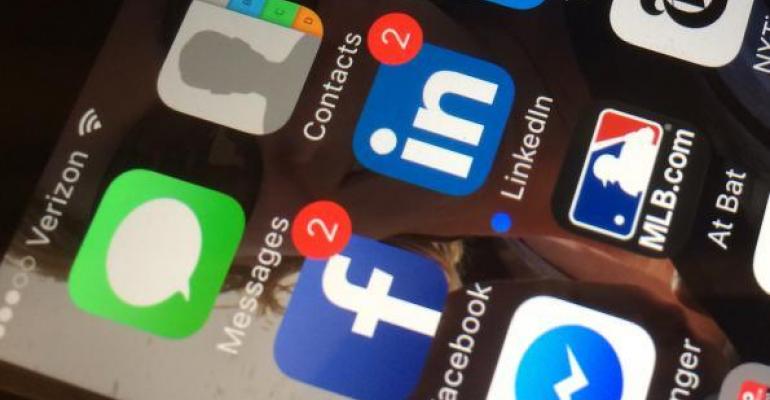Introductions are the most powerful form of word-of-mouth marketing. Our research on elite financial professionals and affluent investors continues to reinforce this fact. When one person intentionally introduces a service provider to someone they know, the credibility transfer speeds up the entire sales process.
We’ve been fans of leveraging LinkedIn to facilitate the introduction process for years. (Check out a recent Stephen and Kevin Show on the topic here). By running an Advocate Search or Advanced Search, you can quickly identify people you’d like to meet based on their professional experience.
While LinkedIn can be used to identify ideal prospects and gather professional experience, it doesn’t do a great job of helping you understand the social relationship between the introducer (first-degree connection) and prospect (second-degree connection). When the social relationship between the introducer and prospect is minimal, the likelihood of the introduction taking place diminishes. Simply put, the credibility transfer that occurs when one person introduces a service provider to another isn’t as strong. Enter Facebook!
When it comes to understanding the social relationship between two people, it doesn’t get any better than Facebook. We tend to be more selective with our Facebook friends—it’s the culture of the network. Typically, we only let those with whom we’ve developed a social connection into our personal and private Facebook world. By doing a bit of detective work, we can find out if the introducer and the prospect are Facebook friends. If we find that they are, we’ve just gathered some invaluable insight into their relationship and revealed an excellent introduction target. Here’s how to do it:
Once you have an idea of the person you’d like an introduction to, navigate to the personal Facebook page of the introducer. From here, click on their “friends” and run a search for the name of the introduction target.

If the introducer’s friends list is set to private, here’s a workaround. You can run a query to identify the friendship between the two people, even if you’re not friends with either one! Simply gather the account ID names of each person. You can do this by going to their Facebook page and looking at the end of their URL. It reads Facebook.com/ACCOUNTID. Some people have customized this and others will simply have a number.
Once you’ve identified the account IDs for both the introducer and the prospect, enter them into a URL that looks like this:
https://www.facebook.com/friendship/ACCOUNTID/ACCOUNTID/

Facebook will then show you interactions, pictures and mutual connections between both the introducer and the prospect. Look for intelligence that will help you facilitate an introduction in the most natural way possible. For example, if you see pictures of them at a local brewery, you’ve just uncovered the perfect venue for the introduction meeting. Your introduction request might be, “I noticed you’re connected to John Smith on LinkedIn. How well do you know him? I’d love to meet him. How about we all go out for a beer at Red Oak Brewery?” (Hopefully you know this: Although we gathered intelligence through Facebook, we don’t tell them that! It’s much more socially acceptable to reference LinkedIn.)
By coupling LinkedIn’s vast search capabilities to identify prospects based upon professional experience with Facebook’s social intelligence factor, your introduction strategy can be significantly enhanced. If you’ve yet to acquire clients with social media, make sure you check out our upcoming virtual training series, "LinkedIn Social Selling."
@StephenBoswell is President of The Oechsli Institute and author of Best Practices of Elite Advisors. @KevinANichols is the Chief Operating Officer for The Oechsli Institute and author of The Indispensable LinkedIn Sales Guide for Financial Advisors.





